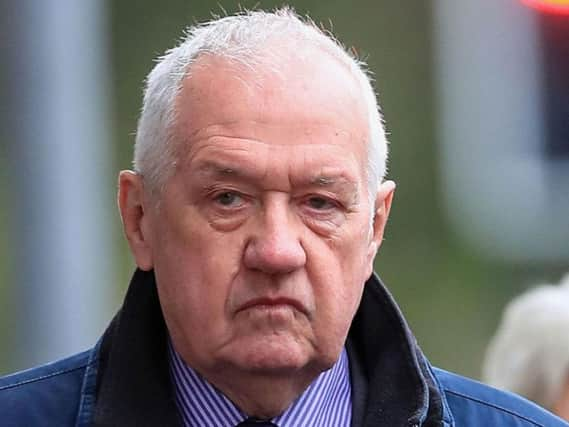Hillsborough commander David Duckenfield's failings led to 96 deaths, retrial hears


Richard Matthews QC prosecuting, opened the case at Preston Crown Court.
Duckenfield, 75, who sat in the well of the court, denies the manslaughter by gross negligence of 95 Liverpool supporters who died in the crush at the match at Sheffield Wednesday's ground on April 15 1989.
Advertisement
Hide AdAdvertisement
Hide AdMr Matthews said Duckenfield was a chief superintendent, or "very senior" South Yorkshire Police officer, who had "ultimate responsibility" for the police operation to secure the safety of 50,000 fans attending the match between Liverpool and Nottingham Forest.
He said: "It is the prosecution's case that David Duckenfield's failures to discharge this personal responsibility were extraordinarily bad and contributed substantially to the deaths of each of those 96 people who so tragically and unnecessarily lost their lives."
The court was told a previous trial had taken place in January but the jury was unable to return any verdict and was discharged.
Warning jurors not to be influenced by anything else they had seen or read, he told them: "No-one else has the task that you have: no other court, inquiry, inquest, jury or person has or can determine what is entrusted solely to you to decide on the evidence you will hear in this court."
Advertisement
Hide AdAdvertisement
Hide AdMr Matthews told the court each of the victims of the Hillsborough disaster died "as a result of the extraordinarily bad failures by David Duckenfield in the care he took to discharge his personal responsibility on that fateful day".
He added: "It was so bad, so reprehensible, so blameworthy and unforgivable that it amounts to a gross failure."
Mr Matthews told the court all of the 24,000 Liverpool fans were directed to the Leppings Lane end of the ground, where limited turnstiles served a bottleneck of a very large crowd, ahead of the 3pm kick-off.
The court heard Duckenfield acceded to requests to open an exit gate to the stadium after crushing built up outside the turnstiles before the match.
Advertisement
Hide AdAdvertisement
Hide AdOnce through exit gate C, spectators saw a tunnel marked "standing" which led to the central pens on the terrace where the fatal crush happened.
The jury was told the youngest victim of the disaster was Jon-Paul Gilhooley, who was 10, and the eldest was Gerard Baron, aged 67.
Ninety-four of the victims died on the day of the disaster, while Lee Nicol, aged 14, died two days later from his injuries.
The court heard the 96th victim, Anthony Bland, suffered brain damage and remained in a permanent vegetative state until he died in March 1993, which meant his death was out of the time to be classed as resulting from manslaughter.
Advertisement
Hide AdAdvertisement
Hide AdJurors were told about the layout of the ground, the police operational order for the day and radio communications.
The court was shown video of a crush at the ground in 1981 where fans could be seen sitting on the pitch perimeter track after they were allowed out of the terraces.
The hearing was adjourned until tomorrow, when Mr Matthews will continue to open the case.